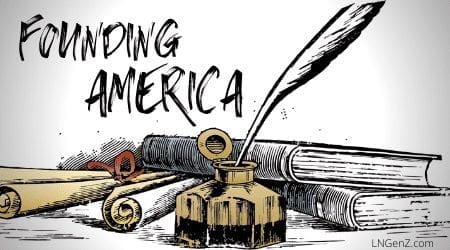-
Declaring Independence
- The Spark of Revolution – Lesson – VIDEO
- Declaration of Independence: Freeing America from Foreign Rule – Lesson
- Declaration of Independence: Freeing America from Foreign Rule – Quiz
- Declaration of Independence “Rough Draught” Now on Microfilm – Lesson
- Declaration of Independence “Rough Draught” Now on Microfilm – Quiz
- Independence Day: The History You Might Not Know – Lesson
- Independence Day: The History You Might Not Know – Quiz
-
Fighting for Independence
- The American Revolution: From British Subjects to US Citizens – Lesson
- The American Revolution: From British Subjects to US Citizens – Quiz
- The Black Patriots and Freedom in America – Lesson
- The Black Patriots and Freedom in America – Quiz
- Revolutionary Women: America’s Founding Females – Lesson
- Revolutionary Women: America’s Founding Females – Quiz
-
Founding a New Republic
Articles of Confederation – Lesson
The first government established after the Declaration of Independence was quite a bit different from what we know today.
Under British rule, the colonies were heavily taxed and controlled – even though they had very little support from the crown. When this treatment was protested, the king responded with force. Fresh from declaring independence, the leaders of the new United States were reluctant to create a strong central government for fear of trading the bad treatment of British rule for more of the same.
Imagine a United States without a judicial or executive branch. No president, no vice president, and no Supreme Court – just a number of independent states represented by the single-house Congress of the Confederation to keep everyone working together. That was the vision for America under the Articles of Confederation. It was, as Article III explains, “a firm league of friendship.”
 Eventually, the Articles were replaced with the U.S. Constitution. So how did the Articles fail?
Eventually, the Articles were replaced with the U.S. Constitution. So how did the Articles fail?
Article II declared:
“Each state retains its sovereignty, freedom, and independence, and every Power, Jurisdiction, and right, which is not by this confederation expressly delegated to the United States, in Congress assembled.”
The people were to be free to come and go as they pleased from one state to another. Congress held the power to declare war or peace and to enter into treaties with other powers. But the states were responsible for raising their own armies for the common defense, coming to the aid of any other state should it be attacked, and charging and collecting their own taxes to pay for it all. Outside of foreign relations, Congress was mostly just the final judge between the states in disagreements.
Ultimately, the Articles of Confederation served better as wartime alliance than an actual government. The people of the 13 colonies were very independent and loyal to their own states rather than any national government, and without the war to unite them, things began to fall apart.
Legislation at the federal level was next to impossible; any law that would affect all 13 colonies required the vote of at least nine, and any amendment to the Articles of Confederation required the support of all 13. Congress did not have the power to charge taxes, so it depended on the states to send what they felt was fair. Without money, the central government couldn’t maintain the military or back its own currency.
It became clear that without money, the central government couldn’t protect the “perpetual union” the Founders dreamed of. In 1786, delegates from five states met at Annapolis, Maryland to discuss a change. They suggested a meeting of all 13 states the next year, and the resulting Constitutional Convention of 1787 marked the end of the Articles of Confederation.